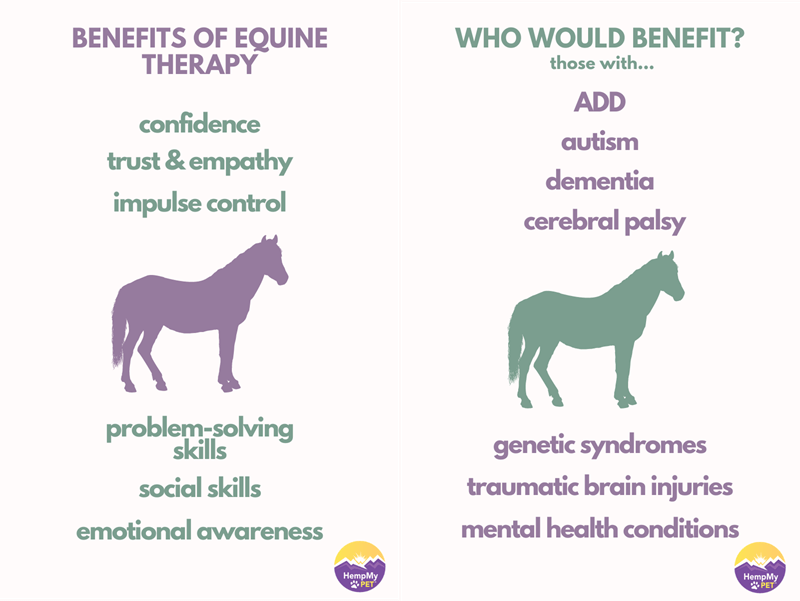If you have spent any time around horses, you may know that there is something extremely calming about their presence. Whether it’s brushing them, riding them, or watching as they gallop in the distance, studies have shown that there is a correlation between horses and healing.
What is equine therapy?
Equine-assisted therapy (EAT) is a process that incorporates horses as a complementary therapeutic service, done in partnership with more traditional therapeutic treatments. In equine-assisted therapy, people engage in a variety of activities such as grooming, feeding, riding and leading mature-age horses. Studies have shown that equine-assisted therapy can reduce stress, improve muscle symmetry in those with cerebral palsy, and heal generational trauma.
Why horses? Since horses have a similar demeanor to humans, it can be easier for people to connect with them. Additionally, horses give immediate feedback to the handler or rider’s actions and their large appearance requires an individual gain their trust. The entire process teaches communication and listening skills, promotes problem-solving and reduces anxiety. By keeping participants focused on the tasks at hand, it encourages people to be present instead of building anxiety about the future.

Who benefits from equine therapy?
Equine-Assisted Therapy has been shown to “promote physical, occupational, and emotional growth in persons suffering from from ADD, Anxiety, Autism, Cerebral Palsy, Dementia, Depression, Developmental Delay, Genetic Syndromes (such as Down Syndrome), traumatic brain injuries, behavioral issues, abuse issues, and many other mental health problems.” EAT is also used in treating addiction and substance abuse.
Additionally, those who struggle with setting boundaries, overcoming fears, identifying and coping with feelings, and trust would also benefit from EAT.

How do I start EAT?
There are many different ways you can approach starting equine-assisted therapy. If you are already working with a therapist, try asking if they know of anyone in your area. If not, try looking up “equine-assisted therapy” in your area. Resources like PATH International are great for finding a center in your area. From there, you will work with a licensed instructor to set goals and map out how to achieve them!
Whether you or a friend or family member are looking into equine-therapy, or maybe you have never heard of it before, it’s safe to say that everyone would benefit from EAT in some form. We all have experiences that can leave us feeling unable to fully enjoy life and equine-assisted therapy can help!
Do you own horses? Check out our Hemp-Infused Olive Oil Equine Formula here.
Menu
Useful Links
Newsletter
Copyright ©2024 HempMyPet. All Rights Reserved. Made with 💖 by Hire X Studio™.
